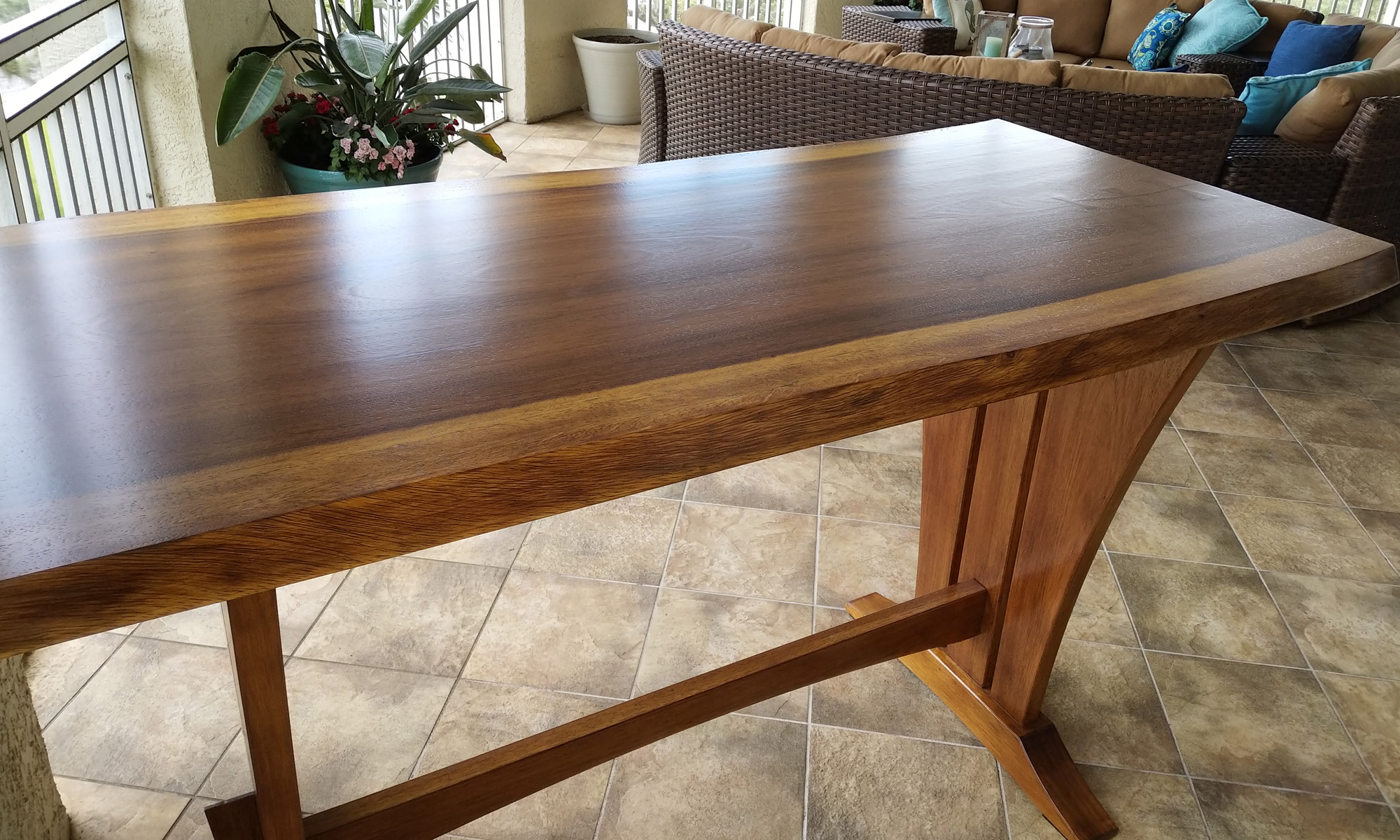To my mind, one of the biggest factors in getting a good cut on a bandsaw is a sharp blade. Things like blade tension, blade guide set up etc are all important, but if the blade is not sharp you will have tracking problems, the blade will wander within the cut and you will have to force the wood through the cut. However, at $20 and up for a blade it is always tempting to use the blade long past when it should have been sharpened or replaced.
For years I have thought about the convenience and cost savings of making my own blades up. I always hesitated, worried that it would be difficult or involve expensive welding equipment. Well a couple of months ago, inspired by a Popular Woodworking article by John Wilson, I took the plunge and ordered a Bandsaw Blade Splicing Kit from Lee Valley and 100 foot coil of Lenox Flexback bandsaw blade, and started making my own blades up. I have been surprised at how quick and easy it is. The shop made blades are far cheaper as well, about $8 per blade. My only regret is that I didn’t start doing this years ago.
The image below shows everything that I use to make up the blades.
- 100 foot coil of bandsaw blade stock.
- Bandsaw blade splicing kit including the jib, flux and ribbon silver solder. (Note: this is silver solder, not soft solder that is used for plumbing)
- Propane torch.
- Gloves.
- Toothpick to apply the flux 🙂
First, measure and mark the blade. The blades for my bandsaw need to be 105″. Add about an 1/8″ of an inch to allow for the scarf overlap.
Hold the two ends back to back and touch them to the grinder to square them off. If you are off by a degree or so the fact that the ends were back to back will cancel that out. (This is a similar principle to joint two pieces of lumber at the same time.) You can also use a belt sander to square the ends of the blade and grind the bevel for the scarf joint.
Set the blade in the jig to double check the joints are square when the blade is aligned in a straight line.
Change the grinder platform angle to approximately 25 degrees and grind a bevel on each end. The bevel needs to be about an 1/8″ long. Note, you need to grind the bevel on opposite faces of the blade.
The image and diagram show the beveled edges. The joint is open here to try show the bevel. The joint needs to be closed tight when the flux and solder are applied and the joint is soldered together.
Place some of the flux on each bevel. Cut a piece of the ribbon silver solder the same length as the blade is wide and place it in the joint.
Using the propane torch, heat the blade until the silver solder melts and flows. The blade turns red hot at this point.
Allow the joint to cool. The metal has become hardened and brittle by the heat of the soldering, so it needs to be annealed. Back the torch away from the blade and apply heat for a few seconds, allow the blade to cool for about ten seconds, then back the torch away another inch and apply a couple more seconds heat, repeat this four or five times, drawing the torch back each time.
If the blade breaks during use, then have a look at where it broke. If it breaks at the joint, then insufficient flux or heat was applied during the soldering process. If it breaks within a coupe inches of the joint, then the blade was not annealed properly. If it breaks somewhere else, then the problem was not with the soldering of the joint.
Once the blade has cooled the joint needs to be filed smooth. Both sides of the blade and the back edge of the blade need to be filed and the surplus flux and metal removed.
The finished joint. One final note, check the orientation of the blade before you put it on the bandsaw. You may need to twist the blade inside out to get it orientated correctly. It needs to be orientated with the teeth facing toward you and pointing down.

















